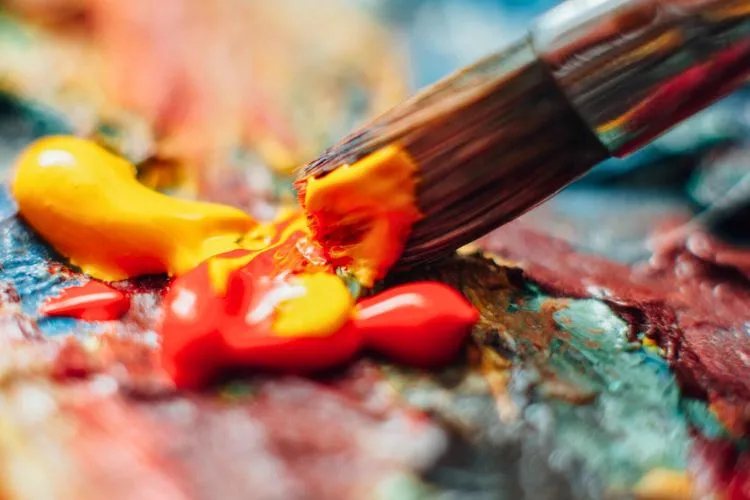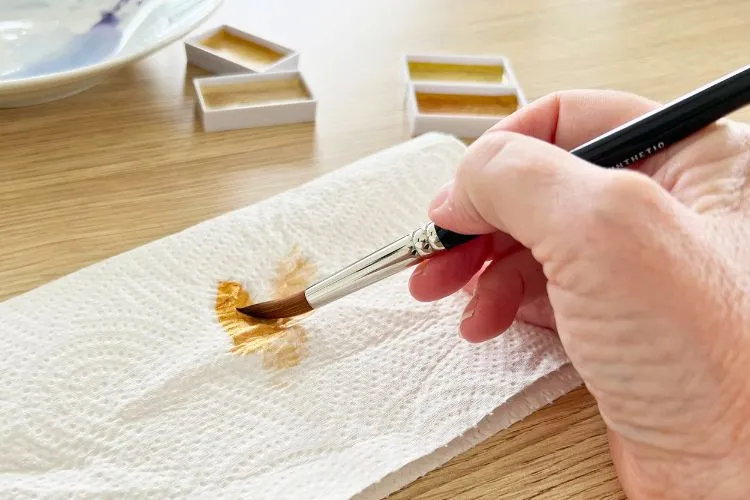Acrylic paints are a staple in the world of art due to their versatility and vibrant colors. However, the environmental impact of traditional acrylic paints, including the emission of volatile organic compounds (VOCs) and the use of non-biodegradable materials, has raised concerns among environmentally conscious artists.
This article explores eco friendly acrylic paint alternatives that maintain high-quality results while minimizing harm to the environment.

Understanding Traditional Acrylic Paints
Acrylic paints are composed of pigments suspended in a polymer emulsion. These paints often contain petroleum-based compounds and heavy metals that can be harmful to the environment.
Additionally, the VOCs released during their use contribute to air pollution and can pose health risks. Recognizing these issues is crucial for artists who are looking to make more sustainable choices in their materials.
Why Switch to Eco-Friendly Alternatives?
Switching to eco-friendly acrylic paints is beneficial not only for the environment but also for the health of the artists. Using greener alternatives can significantly reduce the release of harmful chemicals into the atmosphere and decrease the ecological footprint of art practices.

Moreover, as demand for sustainable products grows, the availability and variety of eco-friendly options continue to increase, making them more accessible to artists everywhere.
Eco Friendly Acrylic Paint Alternatives
Water-Based Acrylics
Water-based acrylics are formulated to provide a similar performance to traditional acrylics but with fewer emissions. They are easier to clean up, requiring just soap and water, which decreases the need for chemical solvents.
Natural Pigment Paints
These paints use natural sources for pigments such as clay, minerals, and plants. Not only do they offer a beautiful, unique color palette, but they are also more biodegradable and less toxic than their synthetic counterparts.
Milk Paints
Milk paint, made from milk protein (casein) and lime, has been used for centuries. It is highly biodegradable and emits no VOCs. Milk paint adheres well to wood and other porous surfaces, making it ideal for furniture and crafts.
Casein Paints
Similar to milk paint, casein paint uses milk protein as a binder. It is known for its fast-drying properties and matte finish. Casein paints are perfect for artists looking for an eco-friendly option that does not compromise on the quality of finish.
Homemade Paints
Creating paints at home allows artists to control the ingredients used, ensuring they are free from chemicals and preservatives. Recipes can be adjusted to get the desired texture and opacity, and artists can use locally sourced natural pigments.
Key Points to Consider When Switching
Artists considering a transition to eco-friendly paints should note the differences in texture and drying time.
Some natural paints may have a thicker texture or may dry faster than conventional acrylics. Experimenting with small batches can help in adapting to these differences without compromising artistic intent.
Pros and Cons of Eco-Friendly Paints
Eco-friendly paints offer improved indoor air quality and are safer around children and pets.

However, they may come with a higher price tag and offer a more limited color range than traditional paints. Understanding these trade-offs will help artists make informed decisions that align with their environmental values and artistic needs.
Maintaining and Storing Eco-Friendly Paints
Proper storage is vital to extend the lifespan of eco-friendly paints. They should be kept in airtight containers and stored in a cool, dry place to prevent spoilage. Keeping paints well sealed also preserves their quality and vibrancy.
How to Dispose of Eco-Friendly Paints?
Even eco-friendly paints need to be disposed of responsibly to avoid environmental contamination. Artists should follow local regulations for disposing of paint and painting materials. Proper disposal ensures that the efforts made in choosing eco-friendly paints are not undermined.
You may also read: Is Acrylic Paint Carcinogenic? | Is Acrylic Paint Eco Friendly?
Advancements in Eco-Friendly Paint Technology
Recent advancements in eco-friendly paint technology have significantly reduced the environmental impact of art materials, balancing sustainability with high performance.
Innovative formulations now mimic the durability and vibrancy of traditional acrylics but with minimal ecological footprints.

One breakthrough involves replacing petroleum-based carriers with water or plant-based alternatives, drastically cutting down on volatile organic compounds (VOCs) and harmful emissions.
Moreover, scientists have developed biodegradable binders and resins derived from natural sources, such as algae and soy, which decompose without leaving toxic residues.
These sustainable materials not only offer a safer option for artists and the environment but also provide excellent adhesion, color richness, and longevity comparable to their synthetic counterparts.
Nanotechnology has also played a role, leading to the creation of more vibrant and long-lasting pigments from non-toxic minerals and plant extracts. These advancements ensure that eco-friendly paints no longer require compromise between environmental ethics and artistic quality, marking a promising shift towards fully sustainable art practices.
Pro Tips
Testing various types of eco-friendly paints can help determine which best suits specific art techniques and materials. Engaging with online forums and communities focused on sustainable art can also provide additional insights and support.
Frequently Asked Questions (FAQs)
Are eco-friendly acrylic paints as durable as traditional paints?
Yes, most eco-friendly paints are formulated to be as durable as traditional paints, though they may require different handling or varnishing techniques.
Can eco-friendly paints be used in professional artworks?
Absolutely. Many eco-friendly paints are of professional quality and suitable for use in fine art projects.
Where can I purchase eco-friendly acrylic paints?
Eco-friendly paints are available at art supply stores, specialty green stores, and online retailers.
Are there any certifications to look out for when choosing eco-friendly paints?
Yes, certifications like the Green Seal or EcoLogo can indicate that a product meets strict environmental and performance criteria.
How do I switch from traditional to eco-friendly paints without compromising my art style?
Start by integrating eco-friendly paints into smaller projects or combine them with traditional paints to transition smoothly without significant changes to your art style.
Conclusion:
The shift toward sustainable art practices is gaining momentum as more artists recognize the environmental impact of their materials.
Eco-friendly acrylic paint alternatives offer a viable solution for those looking to reduce their ecological footprint while still achieving high-quality artistic results. By choosing these alternatives, artists contribute positively to a more sustainable future.
By incorporating these eco-friendly art supplies, artists not only preserve the environment but also enhance their art practice, contributing to a sustainable art community.

Meet Isabella Anderson, your acrylic painting mentor with over a decade of brush-wielding mastery. Dive into the colorful world of acrylics with her expert guidance, featured exclusively on ‘Acrylic Authority.’ Unleash your inner artist and explore the limitless possibilities of this versatile medium alongside a true acrylic aficionado.
